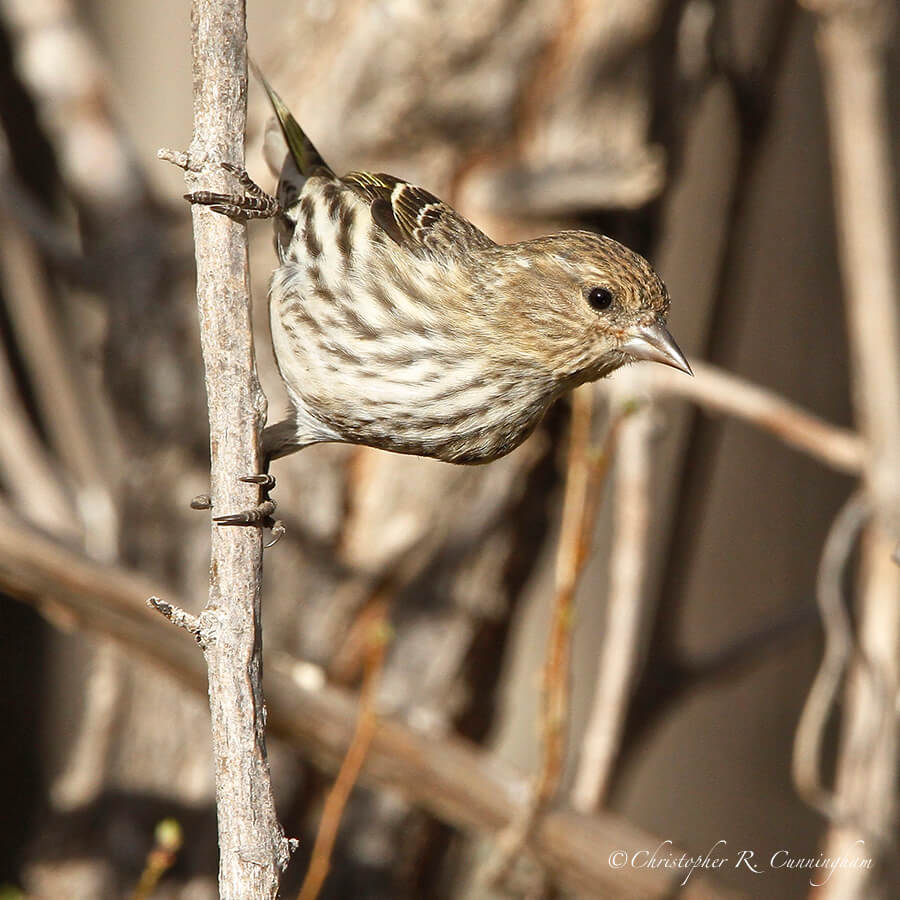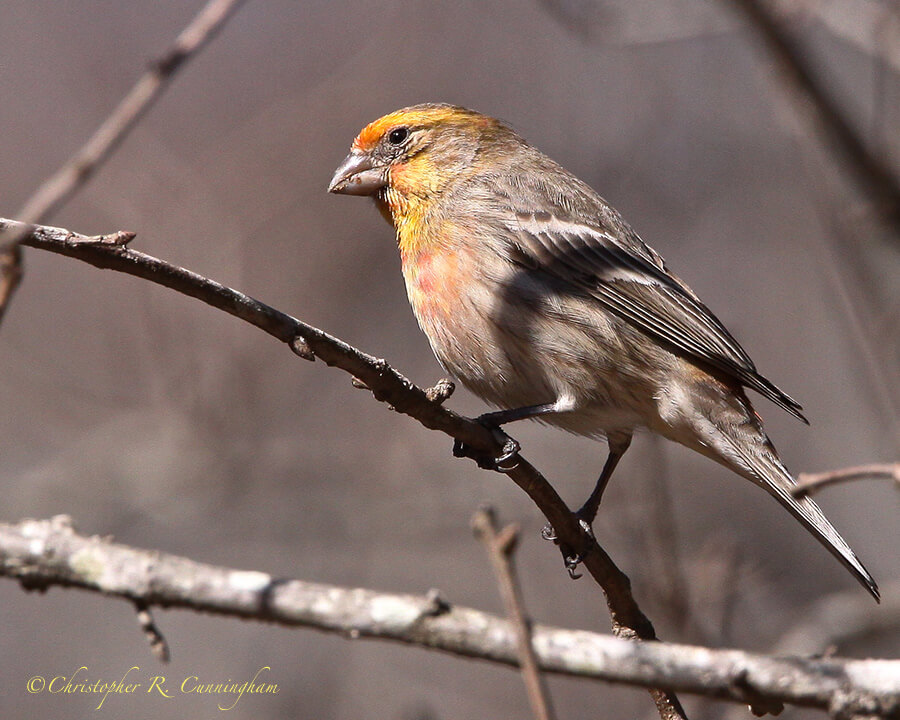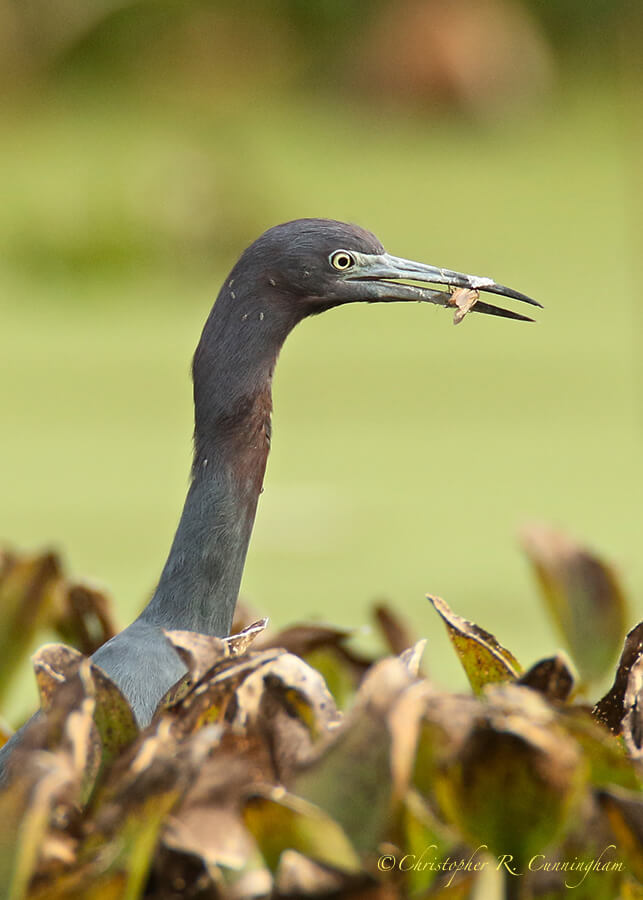Conversation about the weather is the last refuge of the unimaginative. –Oscar Wilde

At some point during the winter, a major blue northern will, hopefully, blow through and stay. Until then we’ll check the radar and bore each other (and the ghost of Oscar Wilde) with endless conversations about the temperature, humidity, jet stream, and El Niño.
But even with the iffy weather, late fall and early winter seem to be the times for charming and oddball little discoveries. Last weekend the first real Arctic blast swept across Texas. Optimistically we headed to the Coast. But at 8 am Sunday on East Beach, Galveston the winds were howling so we aborted our attempts at shorebird photography (a strong wind can twirl the barrel of a supertelephoto lens around and conk an inattentive bird photographer across the skull!) and headed for Lafitte’s Cove.
Hoping the oak motte would expend some wind energy, we approached the trees. But alas, it was still too windy for big glass, and so we settled for binocular birding. On the way into the motte, we heard a Northern Mockingbird imitating the clattering call of a Belted Kingfisher—a first for us. Once in the trees, I spotted a Pine Siskin among a small group of American Goldfinches. This was my first ever sighting of a Pine Siskin on Galveston. Although (according to the literature) Siskins do rarely make it down to the Coast during winter, I have to think that this bird was blown off course by the massive cold front that had just arrived, perhaps 30 hours before.

In late fall/winter trees are bare, and as a result we see more songbirds than at any other time of the year. This is a good time to look for statistically rare individual color variations. Sometimes in winter, for example, it’s possible to observe diet-induced House Finch color variants, namely male birds with orange or yellow on their heads and throats (rather than red). I don’t know what the proportion of yellow- and orange-headed male House finches is—but it must be only one in dozens of birds.
This is also the time to really watch waders hunting. I’ve already mentioned the treefrog hunting that goes on around the southern margin of Pilant Lake (and I saw some more of that this week), but it seems that birds are having to work harder and are tapping somewhat atypical resources. The Little Blue Heron below, for example, was hunting in a patch of water hyacinth—and catching grasshoppers. Over the years I’ve watched Little Blues eat countless small fish, frogs and crayfish, but this is the first time I’ve seen one eating grasshoppers. Usually it’s Cattle Egrets that are grabbing katydids and grasshoppers. Perhaps times are getting a little lean, and everybody is a little less picky and willing to eat anything that moves.
Finally, the strangely warm and humid weather that has dragged deep into November has had one very nasty side effect: an explosion in the population of vicious biting gnats. I’ve always been sensitive to gnat bites, but these suckers raise huge itchy welts that hurt for days. On Wednesday of this week, gnats were so thick at Brazos Bend State Park that even the birds were being dogged by clouds of these nasties. So here I sit, hoping for a hard freeze to settle the bugs’ hash once and for all—and begin the real, lovely birding season.

©2015 Christopher R. Cunningham. All rights reserved. No text or images may be duplicated or distributed without permission.